What are the small black bugs that leave sticky residue on begonias?
three4rd47
6 years ago
last modified: 6 years ago
Featured Answer
Sort by:Oldest
Comments (37)
tsugajunkie z5 SE WI ♱
6 years agothree4rd47
6 years agoRelated Discussions
What to do with sticky leaves
Comments (9)Jimmy, that sticky surface is likely the sugars secreted by sucking insects such as aphids, mites and other sucking types. In damp conditions, it can form a black mold in it, called "sooty mold" as it looks like soot. Are there tree limbs or the foliage of other plants overhanging the roses? I've usually seen what you describe on plants which grow under some other foliage canopy and it more often indicates there are mites or other insects on the undersides of the overhanging foliage than on the roses themselves. That might not be your case, but in many years of dealing with other peoples' gardens, it's what I've encountered time after time. If there is other foliage hanging over the roses, look on their undersides for sucking insects. Eliminate them, or the overhanging foliage, and you will usually eliminate the sticky droppings. Dissolving that sticky stuff requires water as it is primarily sugar and water, with a small percentage of other elements of the plant's sap. In very cool, damp conditions with no potential for extreme heat or extreme sun, I've used very weak solutions of Ivory Liquid in hose end sprayers with copious water to remove extreme deposits which have been there for weeks. The use of anything is going to require water, whether it's plain water or Insecticidal soap. I'd think unless you need the soap to kill insects, you'd be better off not using it, but just rinsing it off with water. If it's only a little bit on a few plants, you can use a hand held sprayer to apply the water, loosen it with your fingers then spray it off. For larger, heavier areas, spraying it off with a hose to wash and rinse it is best. I'd make sure you take care of any infestation on any plants hanging over your roses first. If there are tree leaves or branches from a hedge or other shrubs providing homes for insects on other plants so their "honey dew" falls on your roses, washing it off now will only allow it to be deposited again as long as conditions remain conducive for the insects to continue feeding and proliferating. If you see aphids on your roses and the sticky deposits are only where those aphids are, and if the temperatures are correct for using Insecticidal soap without heat damage, that would help eliminate the aphid situation for a while. Personally, I would still rinse off the sugar water before applying the Insecticidal soap because both together can make a very nasty deposit on the foliage. If your heat is coming, that combination can burn the foliage worse than just leaving the sticky on it. Watch for ants. They eat the honey dew and will "farm" the aphids for it. Kim...See MoreSmall Black Insects on Squash Leaves - How to Prevent and Treat
Comments (7)There is some evidence that the systemic insecticides are contributing to the demise of the bees and other pollinators, so they may not be something you would want to use. For relatively small infestations of non flying insects such as Aphids the best means of control is simply a sharp spray of water. Alcohol used in many home remedy sprays is an antibacterial and does little to control insects, especially in the small amounts usually used. In amounts large enough to kill insects Alcohol will also kill your plants. Insecticidal Soaps are contact controls that once dry have no residual affect, but will harm beneficial insects as well as the pests. Keep in mind that any poison you spray in your garden has the potential to harm every beneficial insect as well as the ones you want to target....See MoreBugs eating my rose leaves. Any idea who?
Comments (36)I found this link that might help: Posted by gardenguru1950 SunsetZ16 (My Page) on Sat, Aug 8, 09 at 13:06 The most common "eater" of rose leaves in California is the Bristly Rose Slug, the larvae of the Rose Sawfly. The sawfly is a pudgy little wasp. It lays its eggs on the UNDERSIDES of the leaves and the caterpillars feed on the UNDERSIDES of the leaves. The rose slug is tiny, no more than 1/4-inch long and very slender, and it's the exact same pale green as the undersides of the leaves. Talk about hard to see and find! It's the critter that "skelotinizes" rose leaves. It's pretty easy to get rid of, actually. Almost any good spray will do the job: insecticidal soap, Neem, pyrethrum. The trick is to spray thoroughly UNDER the leaves. Not stand back and spray all over. You have to get UNDER the leaves. By the way, a commonly suggested spray for rose sawfly is BT. It doesn't work. It doesn't work because it's meant for the caterpillars of moths and butterflies. The rose slug is the larvae of a wasp. And I'm not sure of any beneficial insect that preys upon it. As for your rose buds, Applenut has a good idea. Go outside late at night with a flashlight. The critter most likely is an earwig, sowbug or pillbug. It also might be a slug or snail. Joe Here is a link that might be useful: Bugs that eat roses' leaves...See MoreHelp, my calathea has sticky spots on the underside of its leaves
Comments (16)Yep, it's definitely dryness response... I had forgotten to water mine, and that's what happened. Causes can be being rootbound, drop in humidity, and change in environmental conditions. Its certainly not scale, mealies or spider mite. As always, look at it with a jewellers loupe, or magnifying glass... As a keen gardener, I always carry a loupe when doing my indoor/outdoor rounds. This particular phenomenon is a sugary excretion - if not noticed quickly, it dries into a sticky crystalline spot, and leaves a transparent spot on the leaf underside. I have cleaned it off with soapy water, and a fresh water wipe afterwards Any little bugs will have been attracted to these sweet secretions, they are not the cause....See Moreken_adrian Adrian MI cold Z5
6 years agozen_man
6 years agothree4rd47
6 years agozen_man
6 years agogardengal48 (PNW Z8/9)
6 years agolast modified: 6 years agothree4rd47
6 years agolast modified: 6 years agothree4rd47
6 years agothree4rd47
6 years agothree4rd47
6 years agothree4rd47
6 years agogardengal48 (PNW Z8/9)
6 years agothree4rd47
6 years agolast modified: 6 years agothree4rd47
6 years agogardengal48 (PNW Z8/9)
6 years agolast modified: 6 years agothree4rd47
6 years agolast modified: 6 years agogardengal48 (PNW Z8/9)
6 years agozen_man
6 years agothree4rd47
6 years agolast modified: 6 years agothree4rd47
6 years agolast modified: 6 years agozen_man
6 years agogardengal48 (PNW Z8/9)
6 years agothree4rd47
6 years agolast modified: 6 years agothree4rd47
6 years agolast modified: 6 years agogardengal48 (PNW Z8/9)
6 years agothree4rd47
6 years agolast modified: 6 years agogardengal48 (PNW Z8/9)
6 years agothree4rd47
6 years agogardengal48 (PNW Z8/9)
6 years agothree4rd47
6 years agogardengal48 (PNW Z8/9)
6 years agorhizo_1 (North AL) zone 7
6 years agothree4rd47
6 years agolast modified: 6 years agogardengal48 (PNW Z8/9)
6 years agothree4rd47
6 years agolast modified: 6 years ago
Related Stories

GARDENING AND LANDSCAPINGPorch Life: Banish the Bugs
Don't let insects be the bane of your sweet tea and swing time. These screening and product ideas will help keep bugs at bay on the porch
Full Story
ORGANIZING7 Small Tasks for January Decluttering and Organizing
Get moving on your New Year’s resolutions by cleaning up these often neglected areas at home
Full Story
LIFETips for Moving Into a Smaller Space
Downsize with less compromise: Celebrate the positive, pare down thoughtfully and get the most from your new home
Full Story
MOST POPULARThe 100-Square-Foot Kitchen: A Former Bedroom Gets Cooking
DIY skill helps create a modern kitchen where there wasn’t one before
Full Story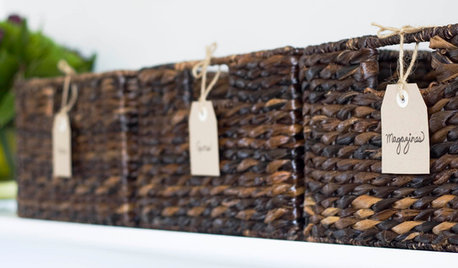
ORGANIZINGGet Organized: Are You a Piler or a Filer?
Tote out the bins and baskets and learn how to be an organized piler if file cabinets leave you cringing
Full Story
DECLUTTERING10 Decluttering Projects You Can Do in 15 Minutes or Less
Try these ideas to get organized at home one small step at a time
Full Story
LANDSCAPE DESIGN8 Patio Arrangements to Inspire Your Outdoor Room
Let these patio furniture setups for spaces large and small motivate you to get outside this season
Full Story
MOST POPULAR11 Nominees for the ‘She Shed’ Hall of Fame
These special sanctuaries let busy women get away from it all without leaving the backyard
Full Story
REMODELING GUIDES'Yakisugi-ita' Is Setting the Siding World on Fire
Exterior wood siding created by a Japanese burning technique is now alighting in the Western world
Full Story
SMALL SPACES8 Challenges of Cottage Living
‘Small rooms or dwellings discipline the mind,’ Leonardo da Vinci once said. Just how much discipline can you handle?
Full Story




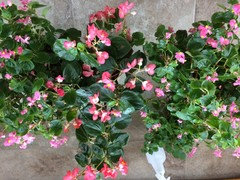


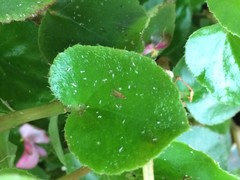
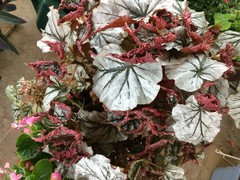
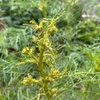


three4rd47Original Author